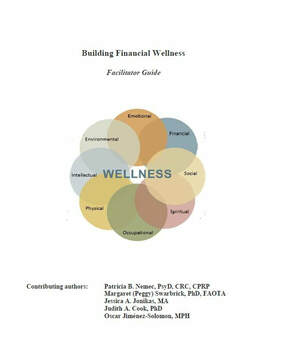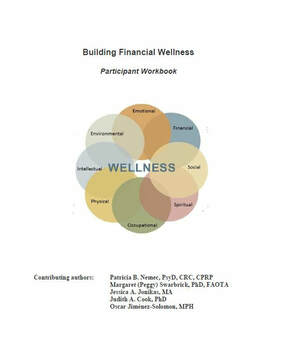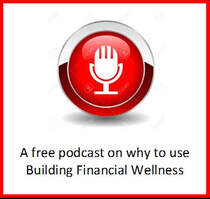About the curriculumBuilding Financial Wellness imparts valuable knowledge and skills that people need to better manage their personal finances. It acknowledges that many individuals with mental health and substance use issues have limited income, poor credit, and minimal access to financial institutions. These barriers, in turn, create financial burden and further limit economic opportunity, creating emotional distress and negatively impacting physical health.
This curriculum helps people to develop money management skills that can promote their overall recovery, well-being, and health. It guides participants in recognizing what triggers spending, how using credit leads to debt, and ways to cope with challenging feelings about money. Participants also learn to set attainable financial goals. Learning occurs in a context of acceptance and encouragement aimed at increasing participants’ sense of control over their personal finances. |
Who can use it? |
This course was developed for people in recovery from mental health and/or substance abuse challenges, but it can be used by anyone who wants to gain basic financial management knowledge and skills. While it is designed for an audience with minimal financial literacy, it also contains suggestions for activities to use with participants who have more advanced knowledge and experience.
|
How does it work? |
The curriculum includes an instructor guide and participant workbook with all of the information needed to teach the 6 classes. The instructor guide (139 pages) includes a teacher script, presentation notes, and information on how to prepare for each class. Instructions are provided for all activities and refer to specific sections in the accompanying participant workbook (56 pages). In-class activities include introduction to basic financial concepts, use of personal reflection in establishing financial wellness, and how to use money management tools to create new habits and set financial management goals. Participants are encouraged to complete assignments on their own between classes.
Classes cover the following information and skill building activities:
|
What resources are needed? |
The teacher guide lists all resources that are needed for each class, including office supplies (such as name tags, pencils, and envelopes). It also contains a “to-do” list that helps them prepare to deliver the course. Also included are additional resources that teachers can use to further educate themselves and participants about advanced topics in money management, if desired.
|
What experience is needed? |
Classes are designed to be co-taught, preferably with one or both teachers having experienced mental health or substance use issues. Teachers should possess knowledge of basic financial concepts, as well as proficiency in facilitating groups, especially on topics that are personally sensitive or challenging to participants.
While teachers do not need to be financial experts, we strongly recommend that they thoroughly review all of the material before starting a course. They also should carefully plan how they will teach each class. Teachers also are expected to act as role models by discussing their own personal financial experiences, engaging in class activities, and sharing their completed between-class assignments. This helps them to better understand course content, while also relating to participants’ experiences. |
Preparing to teach the course |
|
|
|
A free webinar on Building Financial Wellness (25 minutes)
|



